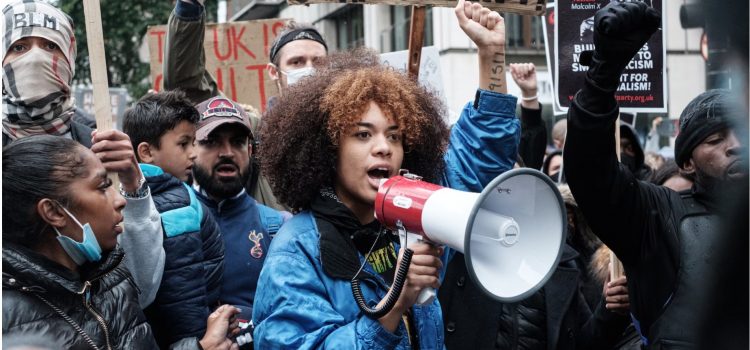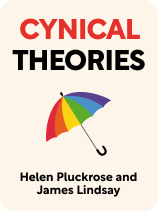

This article is an excerpt from the Shortform book guide to "Cynical Theories" by Helen Pluckrose and James Lindsay. Shortform has the world's best summaries and analyses of books you should be reading.
Like this article? Sign up for a free trial here.
What’s the history of social justice ideology and approaches? How have the goals and methods changed over time?
Past movements for equality used to fight for concrete issues. Helen Pluckrose and James Lindsay contend that contemporary activists and scholars are now more concerned with policing language and culture, shutting down rational debate, and challenging the very foundations of liberal society.
Read on to understand how this incredible transformation came about.
A History of Social Justice
Authors, academics, and cultural critics Pluckrose and Lindsay discuss the history of social justice ideology and methodology in politics and scholarship over the past century or so. They show how it went from a positive force to its current form. They separate this history into three main phases.
Phase 1: Material Approaches
For a long time, social justice movements focused on material issues, or, concrete political and economic advances. Advocates for social justice had specific goals—women’s suffrage, an end to legal segregation, or legalized gay marriage, for example. The authors outline two main forms of scholarship that take material approaches to social justice: liberalism and Marxism.
Liberalism
Liberal scholars and activists believe society should be run according to reason, logic, and evidence-based arguments. Just as science uses evidence and reason to arrive at objective truths about the world, liberals argue that empirical evidence and rational debate can determine the best path forward for society. Liberal activists advocate social justice through concrete legal and political advancements, fighting for universal rights and equal treatment under the law. This ensures everyone is on an equal playing field in society.
For example, 18th-century liberal philosopher Mary Wollstonecraft (A Vindication of the Rights of Woman) argues men and women alike are rational individuals and that when given the same education, both are equally intelligent. She, therefore, suggests a rational society would extend political and property rights to women as well as men.
Marxism
Marxist scholars and activists believe in historical materialism, or that all of politics and history is based on economic forces and class conflicts. This includes social inequalities. Marxists, therefore, argue the best way to address social inequality is economic change, using revolutionary means if necessary. On a larger scale, they argue socialism will create total economic equality, which will then lead to total social equality. On a smaller scale, Marxist academics study how social oppression comes from and relates to economic inequality and capitalism.
For example, from a Marxist perspective, Americans didn’t enslave Africans because Americans believed in racial superiority. Instead, they enslaved Africans because free labor created an incredible amount of wealth for them. Slave owners used the idea of racial superiority as a way to justify this economic exploitation. In other words, the cultural belief was caused by economic circumstances and not the other way around.
Phase 2: Postmodern Deconstruction
Pluckrose and Lindsay explain that, beginning in the 1950s, a new understanding of social justice began to emerge: postmodernism, an intellectual and artistic movement focused on challenging existing understandings of the world. Postmodernists focus not on concrete material issues but instead on how power is expressed through culture.
Though postmodernism can prove difficult to define, Pluckrose and Lindsay identify two main postmodern tenets:
1) Deconstruct All Truths
Postmodernism, the authors explain, rejects the idea of objective truth. According to postmodernist thought, anything considered to be objective truth is in fact a biased narrative, or, view of the world created by a specific culture. These narratives often exist to the benefit of people in power since those with the most power have the most control over the shaping and creation of culture. Postmodern scholarship attempts to discover power dynamics behind claims to objective truth and then deconstruct those claims by pointing out their biases and inconsistencies.
This is the foundation of postmodernism’s critique of liberalism and Marxism. Both philosophies believe people can uncover objective truths about the world—liberals through rational thought and Marxists through analyzing class conflict. Postmodernists argue these are both metanarratives, or, biased cultural lenses people use to create other narratives about the world.
2) Challenge Cultural Hierarchies
Postmodernists believe hierarchies of power exist within every social class as well as between them—people reinforce narratives through social interactions and conversations, often without realizing it. This occurs even on the level of specific language and word choices as people talking to one another imply hierarchies or echo oppressive narratives created by those in power. Because these hierarchies are everywhere at once and constantly being reinforced, postmodernists didn’t have an answer to how they could be addressed or how society could be improved. Therefore, unlike the Social Justice Movement, early postmodernists stuck to academic analysis as opposed to activism.
For example, early postmodernist Roland Barthes’s work Mythologies provides an in-depth analysis of how dominant groups create certain associations or myths that the population at large then repeats and passes on to one another. Advertising does this all the time—Jeep ads associate the vehicle with outdoor adventure and exploration, Gatorade with athleticism and competition, and so on. But while Mythologies shows how myths work and how they can perpetuate social inequality, Barthes doesn’t offer much in the way of concrete advice to address them beyond simply noticing they exist.
Phase 3: Critical Theories
Pure deconstructive postmodernism, the authors explain, wore itself out after only a few decades. Because early postmodernists didn’t believe in objective truth, they couldn’t make any arguments about how things are or should be, causing the mostly academic movement to stagnate. However, a newer generation of academics, artists, and activists in the 1990s through the 2010s modified postmodernism into critical theories, or academic fields that aim to “critique” culture by noticing and challenging specific hierarchies. For example, the academic field of critical race theory “critiques” the idea of race as a whole, challenging those who believe in it.
Pluckrose and Lindsay suggest critical theories became popular because many of the main political goals of past activists were achieved—homosexuality was decriminalized, workplace sexual harassment was made illegal, and so on. Modern social justice activists, therefore, turned away from material approaches and flocked to the culture-and-language-based approach of postmodernism.
The authors outline two main components of critical theories:
1) Postmodern Methods
While critical theories don’t subscribe to the total deconstruction of pure postmodernism, they still use methods influenced by postmodern thought. Critical theories still deconstruct dominant narratives and look for hierarchies within language, culture, and everyday interactions at all levels of society.
2) New Doctrines
Critical theories differ from pure postmodernism in that they establish their own “truths” instead of trying to tear down the concept of truth entirely. Instead of being content with questioning or deconstructing a dominant cultural narrative, they argue using that cultural narrative is morally wrong. Non-dominant cultural narratives—usually the views and experiences of minority groups—therefore must be morally correct truths.
For example, a pure postmodernist deconstructs the femme fatale trope, arguing it represents a dominant narrative of the danger of women in control of their sexuality. They are content just to point this out, though. A critical theory, on the other hand, might go further and argue that using the femme fatale trope is morally wrong because it enforces this dominant narrative. Therefore, the critical theory suggests people shouldn’t put femme fatales in fiction.

———End of Preview———
Like what you just read? Read the rest of the world's best book summary and analysis of Helen Pluckrose and James Lindsay's "Cynical Theories" at Shortform.
Here's what you'll find in our full Cynical Theories summary:
- How and why modern advocacy has gone too far
- How social justice scholarship and activism has become dangerous
- Why freedom of speech and belief in science are more important than ever






